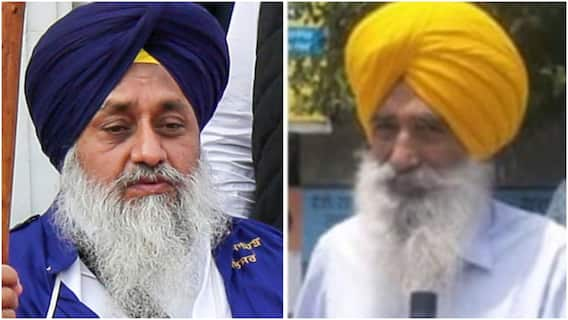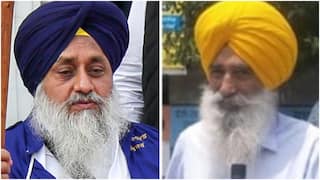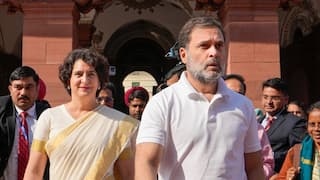National Eye Donation Fortnight: What Eye Donation Involves, And Why Alleviating Blindness Is A Collective Duty
Eye donation involves a corneal transplant, a procedure that can significantly enhance the quality of life for those battling vision impairment.

By Dr Smit Bavariya
As we commemorate the 38th National Eye Donation Fortnight from August 25th to September 8th this year, we continue to uphold a longstanding tradition. This fortnight serves as a beacon of awareness, lighting the path to understanding the importance of eye donation and dispelling myths that surround it. In our journey to restore vision and bring light into the lives of millions, we explore the profound impact of corneal transplants and the pivotal role that eye donation plays in this process.
Eye donation involves a corneal transplant, a procedure that can significantly enhance the quality of life for those battling vision impairment. The cornea, a clear, transparent tissue covering the front of the eye, acts as a window that allows light to enter and be processed by the eye.
MUST READ | Science For Everyone: Why It Is Important To Study The Sun, And How Aditya-L1 Will Do So
Understanding Corneal Blindness
When the cornea becomes cloudy due to injury or infection, it severely diminishes vision, leading to what is known as corneal vision blindness.
In India, approximately 1.3 million people currently suffer from corneal blindness, and regrettably, over 40,000 new cases are added to this number each year. To address this issue and provide a glimmer of hope for those in need, we need around 100,000 corneal transplants annually. However, we are currently procuring only 50,000 corneas per year and utilising just 26,000 of them. What makes this endeavour even more remarkable is that there is no artificial cornea available, and the cornea cannot be commercially purchased; it can only be generously donated by the deceased.
The Reality Of Eye Donation
The stark reality is that patients in need of corneal transplants often wait desperately for extended periods, ranging from six months to a year. The key to bridging this gap lies in the willingness of individuals to become eye donors.
Who Can Be An Eye Donor?
One of the most common questions we encounter is, "Who can be an eye donor?" The answer is simple and heartening: anyone, regardless of age or gender, can become an eye donor after their passing. Even individuals who wore spectacles or underwent previous eye surgeries can donate their eyes.
The cornea can be harvested within six to 10 hours after death, a simple procedure that takes just 15-20 minutes when performed by a trained individual. Importantly, removing the cornea does not disfigure the eye, and it in no way interferes with customary funeral arrangements. There is no need to transport the deceased to a hospital; the eye bank team can recover the eye wherever the deceased person is, whether at home, on the road, in a mortuary, hospital, or burial ground.
ALSO READ | Aditya-L1: How Close To The Sun Will India's First Solar Mission Go? Will It Touch The Star? Know Everything
Pledge For A Brighter Tomorrow
The crucial element is obtaining the consent of the next of kin for eye donation. We encourage individuals to "PLEDGE" their eyes during their lifetime and share this selfless decision with family members and friends. Pledge forms are readily available at eye banks and eye hospitals; once filled out and signed by the donor, they are laminated, and a donor card is issued. This card should be carried at all times, symbolising the individual's commitment to this humanitarian cause.
With ongoing advancements in surgical techniques and the dedication of our skilled medical professionals, the potential for increasing the number of successful corneal transplants is within our grasp. By creating awareness about the importance of eye donation and urging more individuals to pledge their eyes, we can collectively illuminate the lives of millions of people in India.
ALSO READ | Aditya-L1 Will Be Placed 1.5 Million Kilometres From The Earth. Know The Significance Of This Distance
A Collective Responsibility
It is crucial to recognise that blindness is not an isolated problem; it casts a wide net of adversity, impacting not only individuals but also their families, communities, and society as a whole. The burden it places on our healthcare system is substantial. Therefore, it becomes our collective responsibility to alleviate this burden. Together, we can work towards the ambitious goal of making India free from avoidable blindness before 2050.
(The author is a senior consultant ophthalmologist at Dr Agarwal’s Eye hospital, Wadala, Mumbai)
[Disclaimer: The opinions, beliefs, and views expressed by the various authors and forum participants on this website are personal and do not reflect the opinions, beliefs, and views of ABP News Network Pvt Ltd.]
Check out below Health Tools-
Calculate Your Body Mass Index ( BMI )
Trending News
Top Headlines





































